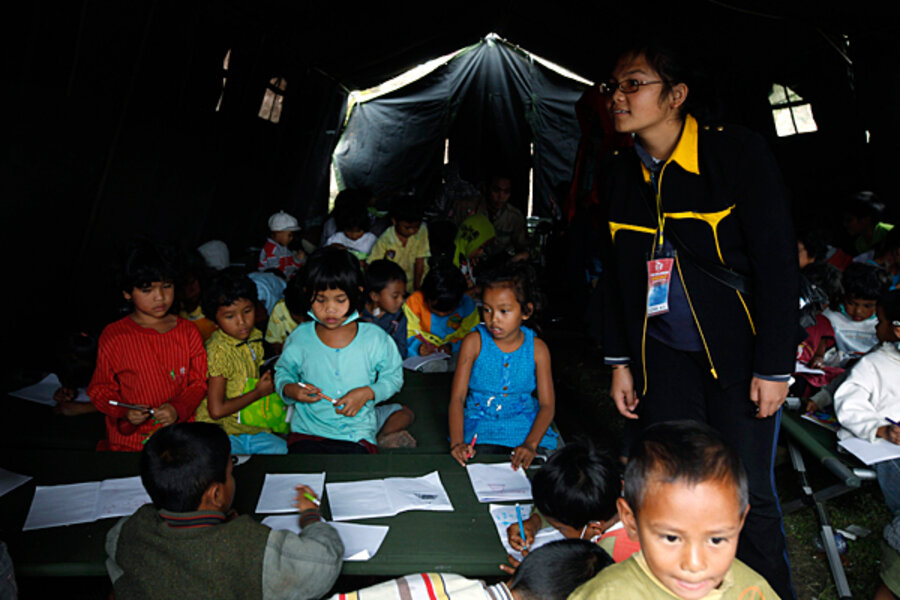Indonesia volcano eruption sends villagers fleeing for the second time this week
Loading...
| Jakarta, Indonesia
A volcano that has been dormant for more than 400 years shot a powerful burst of volcanic ash into the air Friday, catching scientists off guard and sending residents returning home after an earlier evacuation fleeing yet again. Most report that the eruption is only smoke and ash and not life threatening. But some warn this could be a precursor to more earthquakes and volcanic eruptions in the region.
Mount Sinabung in North Sumatra first erupted last Sunday, but the blast released Friday morning was the most powerful one yet. The AFP reports that the eruption lasted for 13 minutes, sending a column of ash as high as 3,000 meters into the air.
Government volcanologist Agus Budianto told the wire service that there had been “intense magma movement” inside the volcano since Thursday evening.
After several days of calm, however, villagers began returning to their homes on Wednesday.
The latest eruption has spread concerns that the long-dormant volcano is building up for something bigger, but Surono, the head of Indonesia’s volcano alert center who goes by one name, says he cannot make any predictions and will continue to monitor activity from a station 8 km away from Mount Sinabung’s base.
Small eruptions are still occurring, he said, but fog around the crater has prevented observers from knowing the height of the latest plume, which appeared around 6 p.m. Friday evening there.
Despite the danger, some residents have refused to leave their homes, according to reports by the Associated Press. One villager said he had to protect abandoned villages just a few miles from the crater’s mouth against looters. Those who had just returned home after days in cramped evacuation centers were loath to uproot themselves again.
Others have been worried by the eruption that shook homes and trees along the volcano’s slopes. But Surono said that despite Sinabung’s recent activity, it is not as dangerous as the active volcanoes on the main island of Java.
“Right now, it is just volcanic ash, not volcanic flow like Merapi,” he said, referring to the central Java volcano that regularly spews smoke and debris. “I worry that if people run and cause panic, it will cause more accidents.”
Residents first began evacuating their homes when Mount Sinabung started spewing clouds of ash on Aug. 26, shocking many villagers and scientists who had never noticed a peep from the volcano.
By Aug. 30, the number of evacuees had reached around 30,000 and the Red Cross told a local paper that several of the evacuation camps were experiencing health issues.
According to reports in the Jakarta Globe, an English-language daily, 486 soldiers and 378 police personnel had been deployed to help with earlier aid distribution efforts, and the Ministry of Health had distributed face masks and food.
“We will continue to monitor the volcano to understand when the activity is occurring, and we will give technical communication to local government,” Surono said, warning that people living within a 6-km radius of the volcano will be prevented from returning to their homes until the situation improves.
Indonesia sits on a series of fault lines running through Southeast Asia up to Japan known as the Ring of Fire because of the frequency of seismic activity. The most famous eruption occurred in 1883, when Mount Krakatau blew its top, changing weather patterns around the world in one of the worst-ever volcanic explosions.
According to the AP, Mount Sinabung last erupted in 1600.





